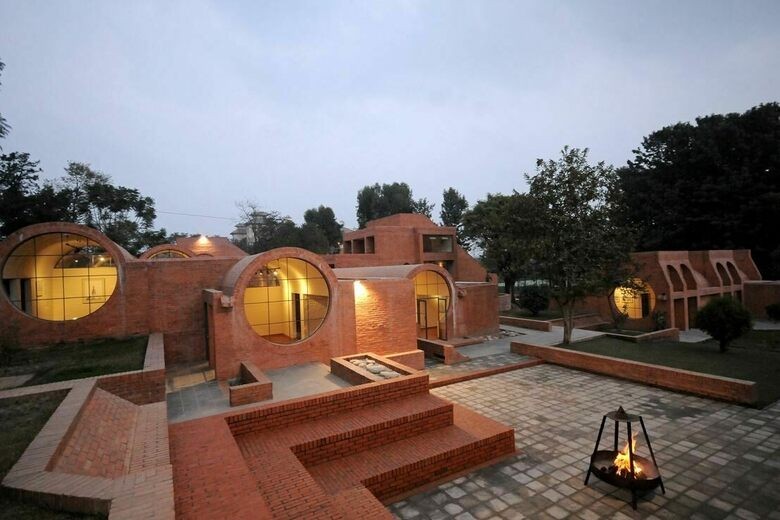Bahadur Shah Baithak

Bahadur Shah Baithak was built in the 1790 CE and used by the Gorkha dynasty as a centre for military strategy, as well as a place to house the arsenal, behind its large doorway, sized to accommodate war elephants. Kathmandu Triennale 2077 composes here a curatorial path about maps and cartographies that speak of dimensions beyond just known geographies. These devices – used to cross borders, to maintain control over them, to subjugate the people who defied them, and to extract resources from them – could also serve to conceptualise liminal spaces, those between this life and the next, bodies both visible and invisible, this planet and the constellations that encircle it. Surveys of stars and territories carry with them ancestral voices that trace kinship alongside geopolitical rifts, while also facilitating the movement of people, materials and energy, sometimes for the colonisers of lands, at others for those who seek freedom. Both historical and contemporary practices continue our attempts to abstract and redefine the very boundaries of the language we use to delineate our relationship to this universe. Such conversations are furthermore in strong resonance with the exhibition chapters at the neighbouring Patan Museum, revealing representations from different cultural vocabularies of the self, its interiorities, its lateral social entanglements, and instruments for navigating the world and its vertical cosmologies.
Below is the list of artists whose artworks were presented at Bahadur Shah Baithak
Daniel Boyd | Ekaram Singh | John Pule | Köken Ergun + Satyam Mishra | Köken Ergun + Tashi Lama | Krishna Manandhar | LAB | Liliana Angulo Cortés | Liu Kuo-Sung | Mae Clark | Mary Dhapalany | Nikau Hindin | Nyima Dorjee Bhotia | Patrizio Di Massimo | Subas Tamang | Uma Shankar Shah | Urgen Dorje Sherpa | Wing Po So | Youdhisthir Maharjan
View and download the PDF of the catalogue for Kathmandu Triennale 2077 exhibition here.
View the virtual exhibition for Kathmandu Triennale 2077 here.

















